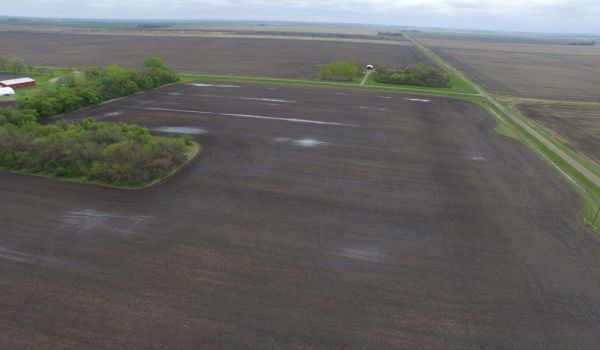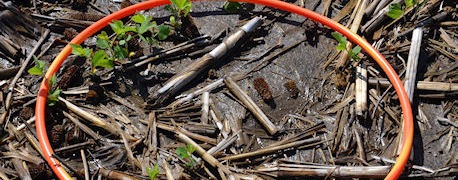Considerations Before Deciding to Replant

We’ve had a typical upper plains spring with variable weather. In less than one week, conditions changed from soils too dry for seed to germinate to saturated and even flooded soils. We also had a frost scare, but I think we escaped any major damage there.
With wet fields, many farmers are now wondering about replanting. How do you evaluate the decision to replant? When weighing your options for corn and soybeans, I recommend using the following population and stand guidelines.
In corn, if you have populations of at least 20,000-22,000 corn plants, the existing stand does not justify the cost and time involved in replanting. Inter-planting corn to add population is not recommended due to the importance of individual plant spacing. If population is less than 20,000, till the remaining plants and re-plant your intended population.
For soybeans, I use a population of 80,000 plants to determine if replant is necessary. Unlike corn, inter-planting additional plants can be used for soybeans. Plant enough to achieve a population of 140,000, with the expectation that some of the original stand may be damaged during the replanting process.
Find your population using one of these methods:
Row length method: Multiply the number of plants in the row by 1,000. Use the chart below to determine the length of row that equals 1/1,000th of an acre.
| Row spacing (inches) | Row length (1/1,000 acre) |
| 7.5 | 69 ft, 8 inches |
| 10 | 52 ft, 3 inches |
| 15 | 34 ft, 10 inches |
| 20 | 26 ft, 2 inches |
| 22 | 23 ft, 9 inches |
| 30 | 17 ft, 5 inches |
Hula hoop method: Count the plants within each hoop, and multiply that number by the appropriate factor, based on the diameter of the hula hoop. For example, if the hula hoop has a diameter of 27 inches, multiply the number of plants inside the hoop by 10,956 to find the population.
| Inside diameter of hula hoop (inches) | Conversion factor |
| 36 | 6,616 |
| 33 | 7,334 |
| 30 | 8,874 |
| 27 | 10,956 |
| 24 | 13,865 |
When making the decision to replant, consider the cost of seed, machinery, fuel, pesticide, and labor. Although replanting may produce higher yields, replanting costs may be greater than the value of the additional yield.












